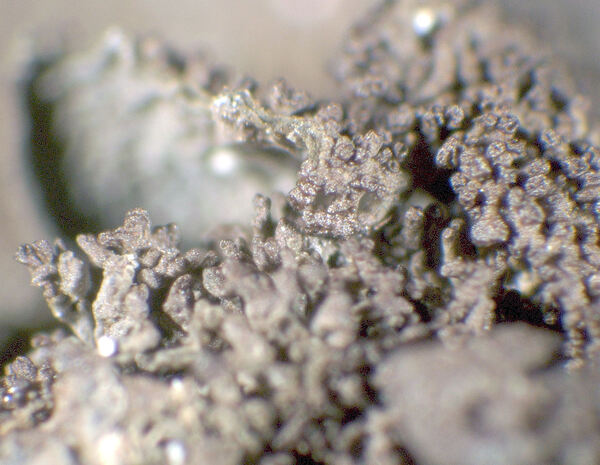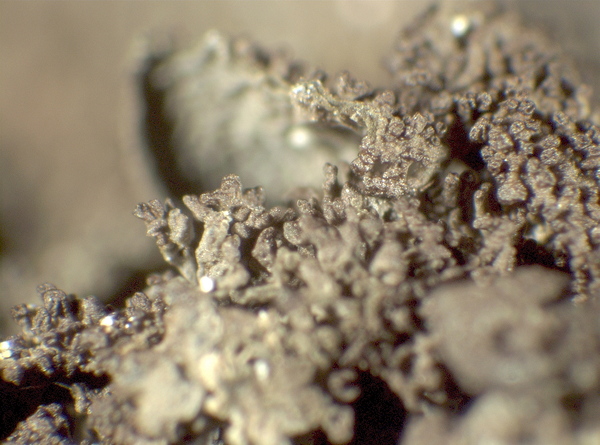Leptogium furfuraceum (Harm.) Sierk
Bryologist, 67: 266, 1964. Basionym: Leptogium hildenbrandii f. furfuraceum Harm. - Lich. Fr., 1: 118, 1905.
Synonyms:
Distribution: C - Laz (Ravera 2008). S - Camp (Ravera & al. 2021c), Cal (Puntillo 1996, Puntillo & Puntillo 2004).
Description: Thallus foliose, gelatinous and much swelling when wet, markedly striated and wrinkled, dark grey to dark brown when dry, grey-black when wet, 160-245 μm thick, the lobes flat to undulate, 0.5-1.5 cm wide, with darker, granular, cylindrical or clavate, simple or sparingly branched, often apically depressed isidia. Lower surface covered in a white, yellowish or pale brown tomentum of 100-300 µm long hairs with elongated cells. Upper and lower cortex composed of a single layer of angular cells; inner part without medulla, with loosely interwoven chains of Nostoc and hyphae. Apothecia rare, lecanorine, sessile, 0.5-0.8 mm across, with a brown disc and an often isidiate thalline margin. Exciple euparaplectenchymatous; epithecium brownish; hymenium colourless, 90-125 µm high, I+ blue; paraphyses mostly simple, c. 1.5 µm thick at mid-level, with slightly swollen apical cells; hypothecium yellowish. Asci 8-spored, cylindrical-clavate, the apex strongly thickened, the apical dome K/I+ pale blue, with a downwardly projecting K/I+ deep blue tubular structure. Ascospores submuriform with 3 transverse septa and 1 longitudinal septum, hyaline, 20-26 x 7-9 µm, with rounded ends. Photobiont cyanobacterial (Nostoc, the cells 4-6 x 3-4 µm, arranged in long chains of 12-16). Spot tests: all negative. Chemistry: without lichen substances. Note: a mild-temperate to humid subtropical species of open woodlands in warm-humid areas, probably more widespread in, and restricted to Tyrrhenian Italy. It is included in the Italian red list of epiphytic lichens as “Endangered” (Nascimbene & al. 2013c).
Growth form: Foliose, broad lobed
Substrata: bark
Photobiont: cyanobacteria, filamentous (e.g. Nostoc, Scytonema)
Reproductive strategy: mainly asexual, by isidia, or isidia-like structures (e.g. schizidia)
Most common in areas with a humid-warm climate (e.g. most of Tyrrenian Italy)
Commonnes-rarity: (info)
Alpine belt: absent
Subalpine belt: absent
Oromediterranean belt: absent
Montane belt: extremely rare
Submediterranean belt: absent
Padanian area: absent
Humid submediterranean belt: extremely rare
Humid mediterranean belt: extremely rare
Dry mediterranean belt: absent
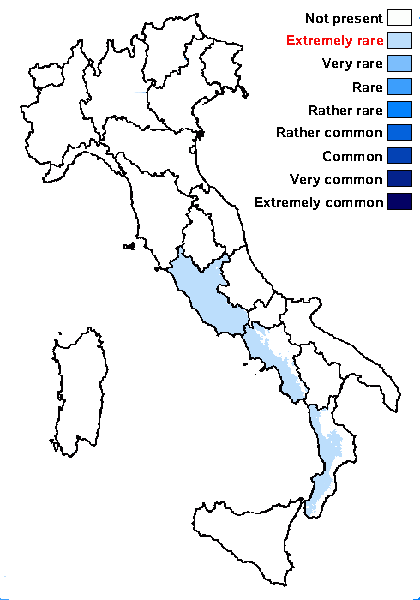
Predictive model
Herbarium samples


E. Pittao; Owner: Department of Life Sciences, University of Trieste
Herbarium: TSB (30811)
2008.03.10
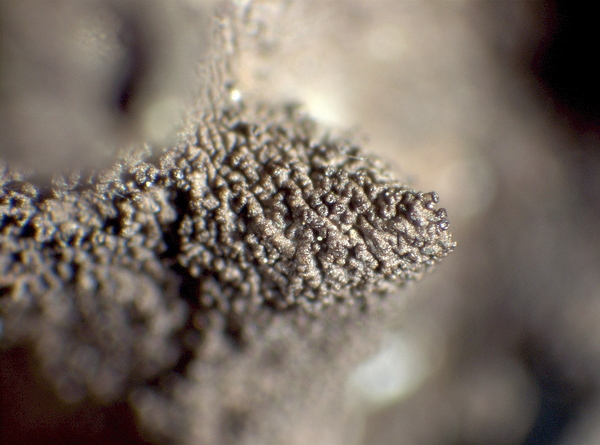

E. Pittao; Owner: Department of Life Sciences, University of Trieste
Herbarium: TSB (30811)
2008.03.10


E. Pittao; Owner: Department of Life Sciences, University of Trieste
Herbarium: TSB (30811)
2008.03.10
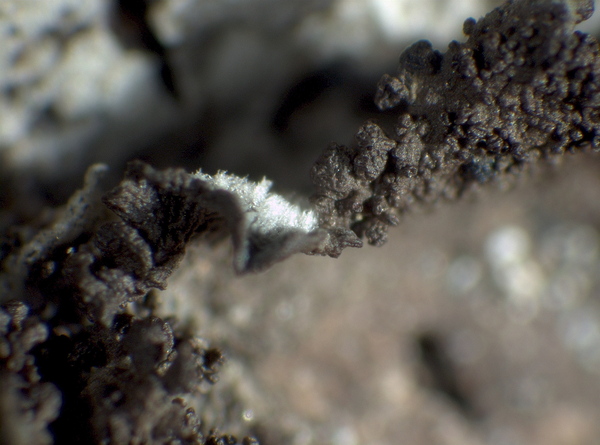

E. Pittao; Owner: Department of Life Sciences, University of Trieste
Herbarium: TSB (30811)
2008.03.10


E. Pittao; Owner: Department of Life Sciences, University of Trieste
Herbarium: TSB (30811)
2008.03.10
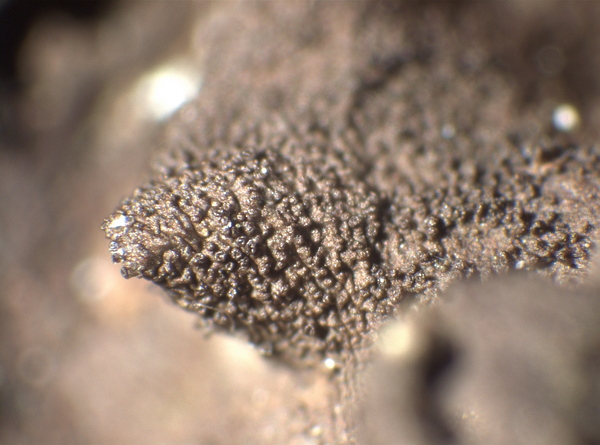

E. Pittao; Owner: Department of Life Sciences, University of Trieste
Herbarium: TSB (30811)
2008.03.10
Growth form: Foliose, broad lobed
Substrata: bark
Photobiont: cyanobacteria, filamentous (e.g. Nostoc, Scytonema)
Reproductive strategy: mainly asexual, by isidia, or isidia-like structures (e.g. schizidia)
Most common in areas with a humid-warm climate (e.g. most of Tyrrenian Italy)
Commonnes-rarity: (info)
Alpine belt: absent
Subalpine belt: absent
Oromediterranean belt: absent
Montane belt: extremely rare
Submediterranean belt: absent
Padanian area: absent
Humid submediterranean belt: extremely rare
Humid mediterranean belt: extremely rare
Dry mediterranean belt: absent

Predictive model
| Herbarium samples |


E. Pittao; Owner: Department of Life Sciences, University of Trieste
Herbarium: TSB (30811)
2008.03.10


E. Pittao; Owner: Department of Life Sciences, University of Trieste
Herbarium: TSB (30811)
2008.03.10


E. Pittao; Owner: Department of Life Sciences, University of Trieste
Herbarium: TSB (30811)
2008.03.10


E. Pittao; Owner: Department of Life Sciences, University of Trieste
Herbarium: TSB (30811)
2008.03.10


E. Pittao; Owner: Department of Life Sciences, University of Trieste
Herbarium: TSB (30811)
2008.03.10


 INDEX FUNGORUM
INDEX FUNGORUM
 GBIF
GBIF
